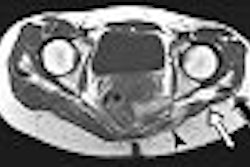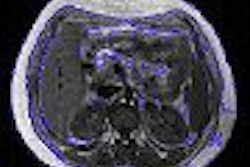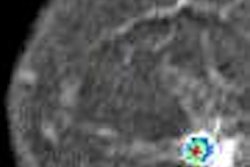I've always been a sucker for medical dramas and "House" on the Fox network is no exception. It's one of only two TV shows that I make a conscious effort to watch. Despite its transparent formulaic plotlines, I just can't help myself. And while I haven't come to fear that every sniffle I develop is really the onset of some bizarre hemorrhagic fever, I am aware that many viewers may see the show's highly fictionalized accounts of imaging as something approaching reality.
So for those who have had to endure the "But this isn't what I saw on TV last week" refrain from patients, I offer the top five things I've learned about MRI from "House":
1. When you turn the magnet on, and the patient inside has a ferrous object in his or her head, the magnet can attract it with such force that it can blast through the skull.
Some goofball taught me that MRI magnets are always on. I must have misunderstood the vendor information about the vast majority of clinical magnets currently in use. And what about all that MR physics nonsense about attractive (translational) forces being greatest outside the bore of the MRI and diminishing to zero as you progress to the center of the bore? I had been taught that the forces in the center of the bore are almost exclusively rotational, but I should probably defer to the MRI wisdom of the "House" writers.
2. Infectious disease specialists and other nonradiologist physicians scan their own patients.
Who needs those pesky technologists to operate MRI equipment when you can get residents and attendings to scan their own patients? Just imagine the number of full-time positions this one change would eliminate! Are the costs of healthcare too high? It'll be far better after we eliminate that unnecessary payroll burden of technologists, nurses, and transport personnel.
3. Patients don't need those pesky coils, or even to hold still, during imaging exams.
As if it's not claustrophobic enough just to be stuffed in a tube, we insist on confining patients further in partial-body cages or wraps and demand that they remain exquisitely still for long stretches of time. Why do we do this since, as demonstrated every Tuesday night, it's really not necessary? It must be those sadistic technologists requiring this only for some perverse pleasure. It's a good thing we're going to fire them all tomorrow.
4. Screening is just so passé.
When was the last time Dr. Gregory House, or one of his lackeys, asked a patient about contraindications prior to sticking them in the scanner? Where did they find all of those MR-safe stethoscopes and other doctor-looking appliances that are dangled so liberally on their white lab coats? I'm sure every resident is issued an MR-safe stethoscope on their first day so that they can accompany their patients into the MRI room (before they perform the scan). That way, they can avoid that pesky necessity of actually screening for ferromagnetic objects. Finally, what about the patients? Well, not screening them leaves the door open to MR versus. pacemaker conflicts, which could induce fatal tachycardia. Now that would be good television. Yes, best not to screen patients, either.
5. MRI exams take no more than three minutes.
OK, it is television and nobody wants to watch an entire MR exam eat up three-quarters of the show, but to stick a wriggling patient in the bore, press a button, and poof! Out comes the desired scan. Boy, if it's that easy MRIs should have self-timers like cameras do so we wouldn't need even the physician. Patients could take their own images. Just insert your insurance card or $750 dollars in the slot, and you have 60 seconds to get on the table.
Cheeky sarcasm aside, the show is entertaining and I don't begrudge GE Healthcare for its (undoubtedly very expensive) MRI product placement within the show. I don't expect an episode to give us a minute-by-minute account of a lower-extremity runoff exam, but the degree to which the show's writers and technical advisors have played fast and loose with the facts of MRI safety has led to too many patient misconceptions.
"House" is on network prime time, which, last I checked, has never been mistaken for educational programming. But viewers who wind up as MR patients may be inclined to argue with their healthcare providers about the appropriate MR exam on the basis of what they've seen on the show. Given the miseducation that's occurred, I hope that next season's episodes help to correct these errant perceptions.
And if the show is looking for technical consultants who can help them develop a script, I already have a responsible idea in the works: It starts with a case of suspected avian flu in a pacemaker-dependent supermodel who recently underwent breast-augmentation surgery....
By Tobias Gilk
AuntMinnie.com contributing writer
August 1, 2006
Reprinted from www.mri-planning.com by permission of the authors. If you would like more information on any aspect of MR facility design or safety, please contact Robert Junk or Tobias Gilk at Jünk Architects.
Related Reading
Magnet room equipment and furnishings: The ultimate caveat emptor, July 19, 2006
Selecting a site for your next MRI suite: It pays to plan ahead, July 12, 2006
Radiology is dead -- long live imaging! June 23, 2006
Keeping Zone III secure: Access controls for MRI suites, June 7, 2006
Magnet room doors and quench entrapment, May 22, 2006
Copyright © 2006 Jünk Architects, PC



















